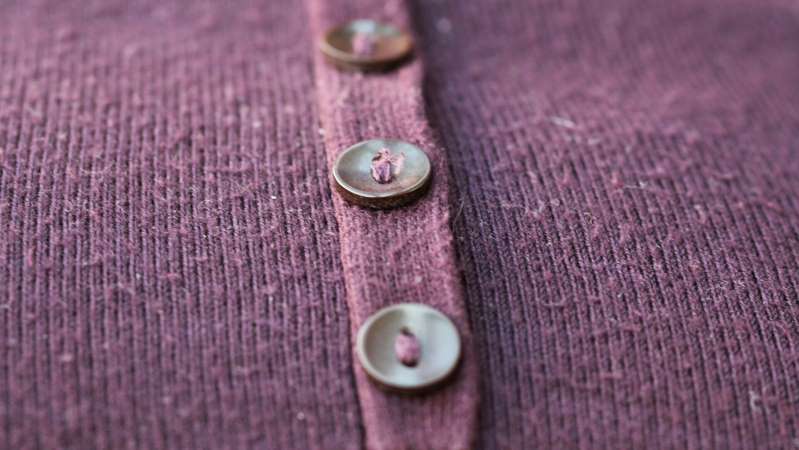When it comes to pilling, no season is safe: think fuzzy sweaters in the winter and rough bikini bottoms in the summer.
But have you ever have wondered what those tiny fuzz balls really are, or why they happen? TODAY Style sought answers from Sean Cormier, an assistant professor at the Fashion Institute of Technology, who teaches a class about textile quality assurance.
Why does it happen?
It’s important to understand that fabrics consist of either long fibers or short fibers and, generally, short fibers — like cotton — are more likely to pill. There are more tiny ends (as opposed to one long, continuous fiber, like silk) that can get tangled together and create pills, which usually happen when the fabric is rubbed or abraded somehow.
“Silk is a natural filament, which means it’s long fibers,” he said. “You unravel a silk cocoon and it’s one continuous fiber that runs 1,600 yards.”
Denim is another safe bet for fabrics that rarely pill.
On the flip side, “synthetic acrylic is terrible for pilling,” Cormier said.
“It’s basically a substitute for wool,” he said. “Like those cheap hat-glove-scarf three-piece sets. Those things last one season and then they pill and look really hairy. Any fiber that doesn’t tend to absorb water — polyester, nylon — also tends to pill.”
Another factor to consider is twist. In other words, how tightly the fibers are held together in the garment.
“The higher the twist, the firmer the feel of fabric,” Cormier said. “You’ll see pilling on a lot of loose knits because there’s more area for the abrasion to take place and it’s not as tightly twisted.”
How do you avoid it?
There are ways to minimize pilling, though. One easy solution is to wash clothes inside out.
“The washing machine goes back and forth — (the garment) is rubbing against other articles of clothing. If you wash something inside out, the face of the fabric won’t be abraded as much and pills will show up mostly on the backside,” Cormier said.
Another gentler option is hand-washing clothes — that includes swimsuits. If you’ve noticed your kids’ bathing suit bottoms are starting to develop annoying bits of fuzz, encourage them to avoid sitting on rough surfaces, like the concrete edge of a swimming pool. Pro tip: Sit on a towel instead.
Or, consider using a laundry detergent with enzymes.
“They eat away at the fabric — not a lot, but a little bit — and that little bit will remove some of those loose, short fibers that tend to pill. Enzymes are used in a lot of wash products. They’re not uncommon.”
Brands such as Tide and Arm & Hammer carry laundry detergents with enzymes.
You could also invest in a sweater-shaver, a tool that runs over the surface of the fabric and slices the pills off, but Cormier is hesitant to recommend it because if you shave too much, you could ruin the garment.
“I would think you’re more likely to create a hole, but some people swear by it,” he said.







